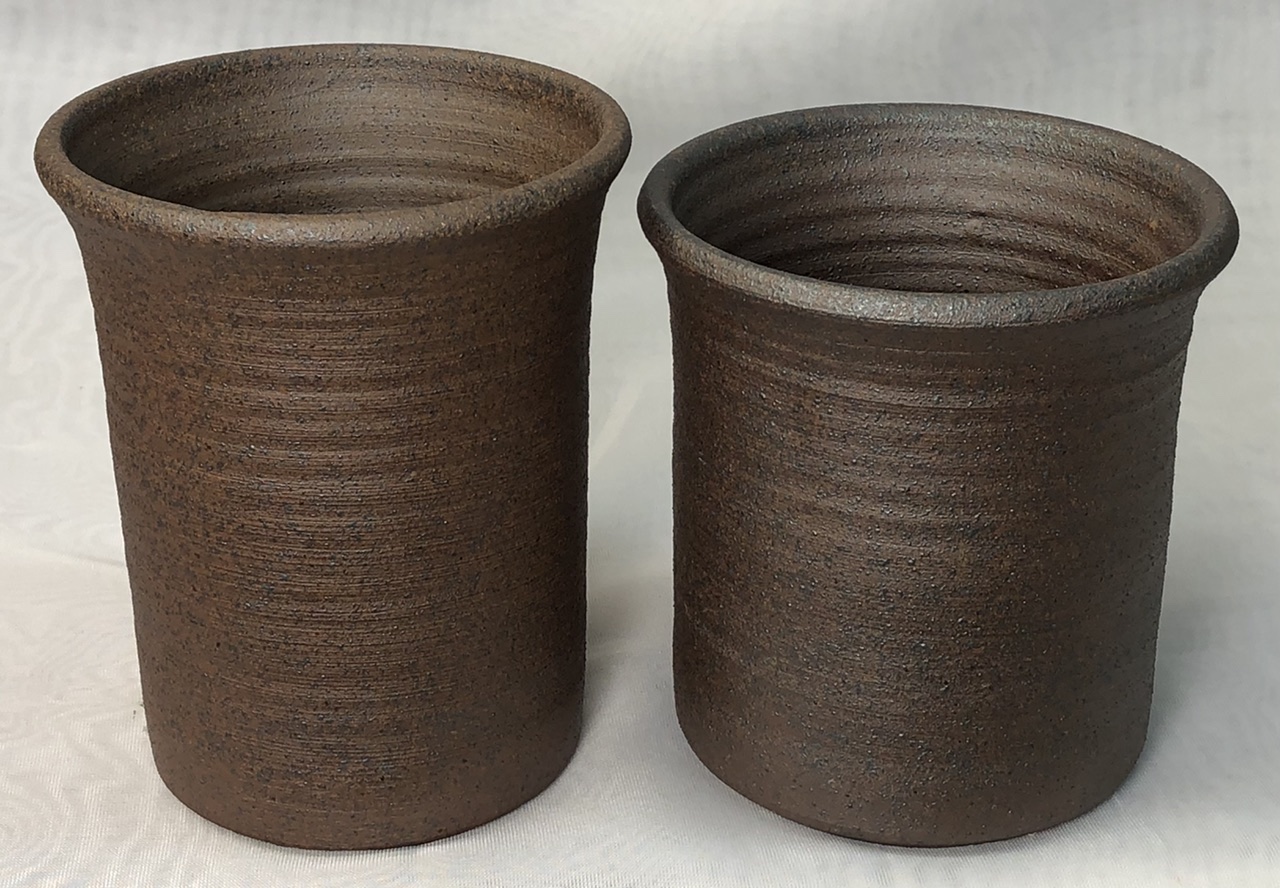| Monthly Tech-Tip | No tracking! No ads! | |
Fire-Red
Alternate Names: Plainsman FireRed
Description: Plainsman Native Clay
| Oxide | Analysis | Formula | Tolerance |
|---|---|---|---|
| BaO | 0.30% | 0.01 | |
| CaO | 0.50% | 0.06 | |
| K2O | 1.10% | 0.08 | |
| MgO | 0.60% | 0.10 | |
| Na2O | 0.10% | 0.01 | |
| TiO2 | 0.90% | 0.07 | |
| Al2O3 | 15.40% | 1.00 | |
| P2O5 | 0.20% | 0.01 | |
| SiO2 | 66.30% | 7.31 | |
| Fe2O3 | 6.90% | 0.29 | |
| MnO | 0.10% | 0.01 | |
| LOI | 7.60% | n/a | |
| Oxide Weight | 612.00 | ||
| Formula Weight | 662.34 | ||
Notes
A natural, high iron, high-temperature stoneware clay blend of a refractory low plastic red clay, a medium temperature medium plastic red clay and a bentonitic ball clay. Fire-Red has medium plasticity and is thus a plasticity neutral additive to clay bodies. It is slightly sandy and by itself is a deep, solid red at cone 10R with speckle. It is stable to cone 12+. This material is a better choice for imparting red color to medium and high-temperature bodies than typical low-fire red clays (the latter tend to flux to brown rather than red colors even in bodies with low feldspar).
This material is a possible alternative to Newman red fireclay with caveats.
-This material is more plastic (thus ball clay or bentonite in the recipe can be reduced to compensate)
-Fire-Red is a little more vitreous (thus feldspar can be reduced).
-Fire-Red has a much coarser particle size distribution so homogeneous red burning bodies will look less so and they will have a much more toothy feel.
-Fire-Red has less staining power, you may need to augment it with iron oxide.
Fired Temperature, Cone 6 7 8 9 10 11 10R
--------------------------------------------
Fired Shrinkage: 3.2% 3.4% 3.6% 3.6% 3.7% n/a n/a
Absorption: 8.2% 8.0% 7.8% 7.5% 7.1% n/a n/a
Fired Strength:
(lbs/ square inch) 3800 4200 4300 4300 4300
Sieve Analysis Wet Washed
(Root of 2 series) +35 +48 +65 +100 +150# +200 +325
--------------------------------------------
0.1% 0.5% 2.5% 5.0% 6.0% 11.0% 11.0%
Texture: Sl. tooth
Plastic Index (1-10): 5
Green Strength (lbs/sqaure inch): 800
Dry shrinkage: 5.5
Dried density: 2.06
PCE: 16.5
Related Information
Fire-Red and Restone fired test bars

This picture has its own page with more detail, click here to see it.
Plainsman Fire-Red (left) fired at cone 8,9,10,11 and 10R and Redstone (right) fired at cone 4,5,6,7,8.
Fire-Red fired to cone 10R with Ravenscrag Slip as an inner glaze.

This picture has its own page with more detail, click here to see it.
This can fire almost black on reduction. However, as a pure material, it is prone to dunting as it is high in larger quartz particles.
Amazing iron-blossoms in a vitreous reduction stoneware body

This picture has its own page with more detail, click here to see it.
Fire-Red is an unusual material for several reasons. It has a high iron content yet is a fireclay. It is also non-plastic. Most important, it is not ground to 200 mesh like industrial materials. These bodies demonstrate it well, left: 42.5% Fire-Red, 42.5% ball clay and 15% Custer feldspar, right: 60% Fire-Red, 30% ball clay and 10% feldspar. The ball clay adds plasticity. The feldspar gives control of the degree of vitrification (the left one has 1.3% porosity at cone 10R, the right one 1.5%). This recipe vitrifies so it does not exhibit the deep red color that Fire-Red would give if there was no feldspar. Look closely at the surface: It is covered by thousands of tiny iron-eruptions, they occurred as the iron pyrite particles liquify as FeO (because of the reduction atmosphere in the firing), and these produce a metallic appearance. And, they will bleed through an over-glaze, if present, to give stunning speckled surfaces.
Links
| URLs |
https://plainsmanclays.com/data/index.php?product=12906
Fire-Red Data Sheet |
| Materials |
Plainsman Red Fireclay
|
| Materials |
Newman Red Clay
|
| Materials |
M2 Red Stoneware
|
| Materials |
A1 Ball Clay
It is very high in iron stone (pyrite) concretions and soluble iron salts, a heavily stained bentonitic ball clay. |
| Materials |
Saint Rose Red
|
| Materials |
Redstone
|
| Materials |
Calvert Clay
|
| Typecodes |
Clay Other
Clays that are not kaolins, ball clays or bentonites. For example, stoneware clays are mixtures of all of the above plus quartz, feldspar, mica and other minerals. There are also many clays that have high plasticity like bentonite but are much different mineralogically. |
| Typecodes |
Fireclay
Fireclays are non-kaolin non-ball clay materials similar to stoneware clays but lacking fluxing oxides. Many fireclays have a PCE of 28 or more. |
Data
| Drying Shrinkage | 6.0-7.0 |
|---|---|
| Firing Shrinkage | Cone 4: 3.0-4.0% Cone 6: 3.5-4.5 Cone 8: 4.0-5.0 Cone 10: 4.5-5.5 Cone 10R: 3.0-4.0 |
| Frit Softening Point | PCE 17 |
| Sieve Analysis Dry | +48 mesh: 0.5-1.0% 48-65: 2.0-4.0 65-100: 3.0-5.0 100-150: 4.0-6.0 150-200: 5.0-7.0 200-325: |
| Water absorption | Cone 4: 9.0-11.0% Cone 6: 7.5-9.5 Cone 8: 6.0-8.0 Cone 10: 5.0-7.0 Cone 10R: 2.0-3.0 |
| By Tony Hansen Follow me on        |  |
Got a Question?
Buy me a coffee and we can talk

https://digitalfire.com, All Rights Reserved
Privacy Policy
